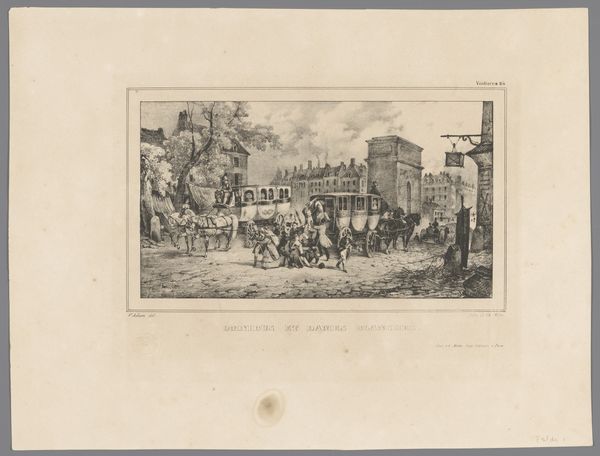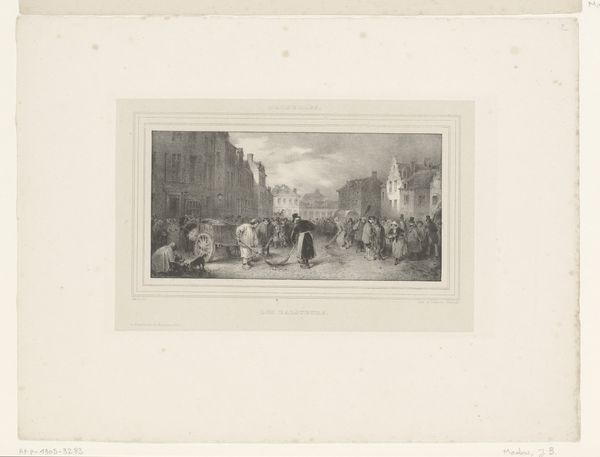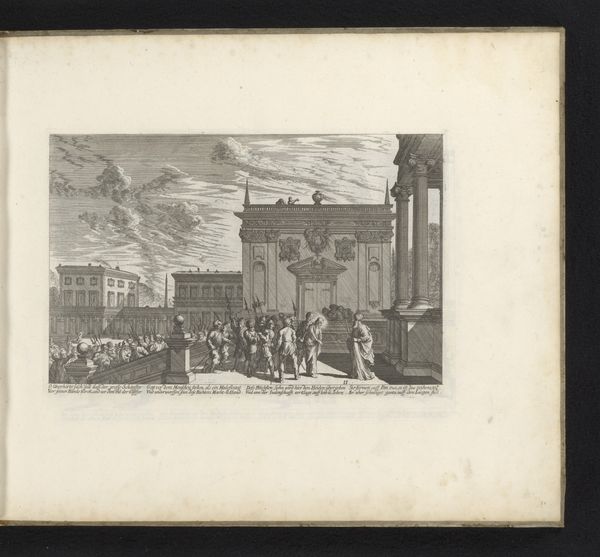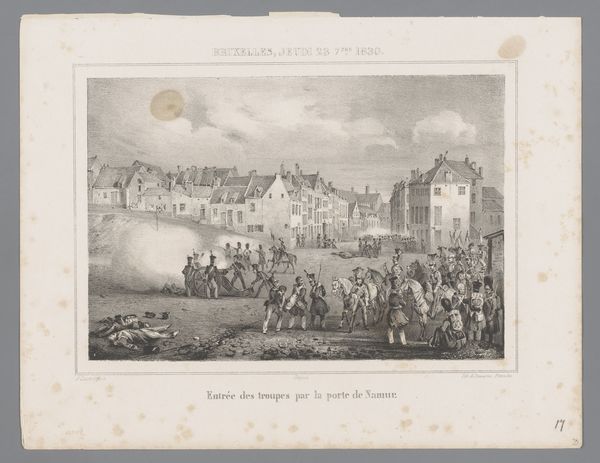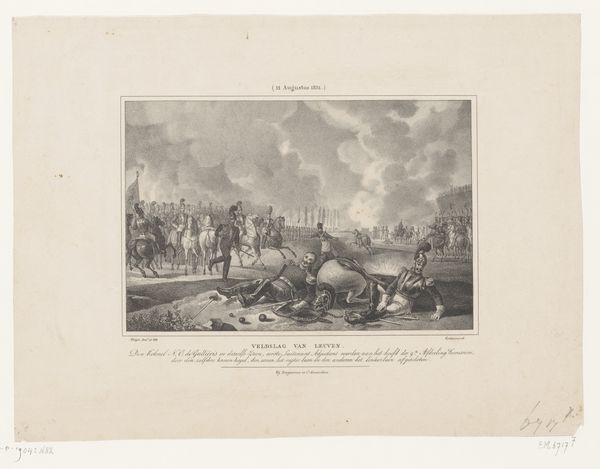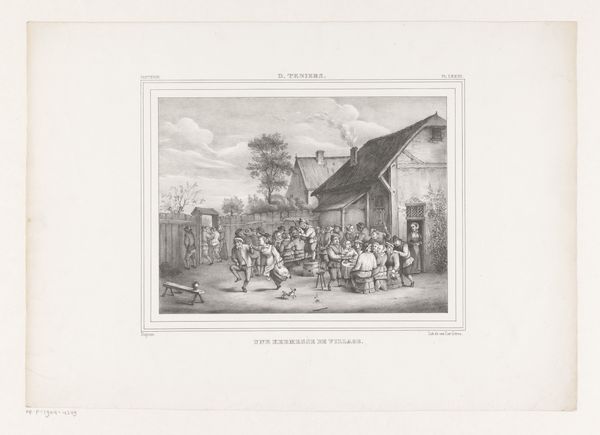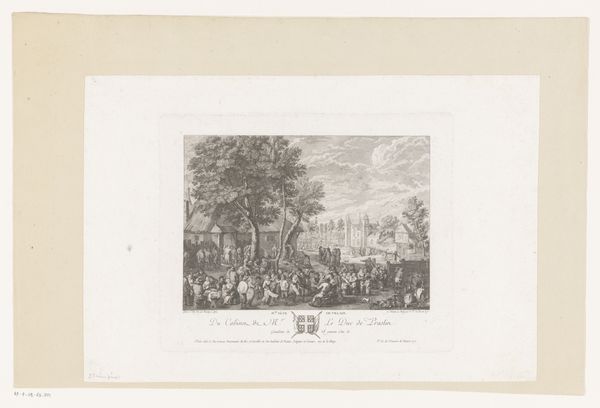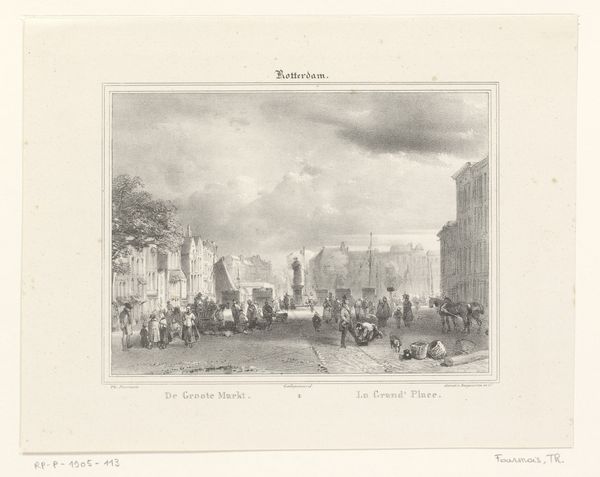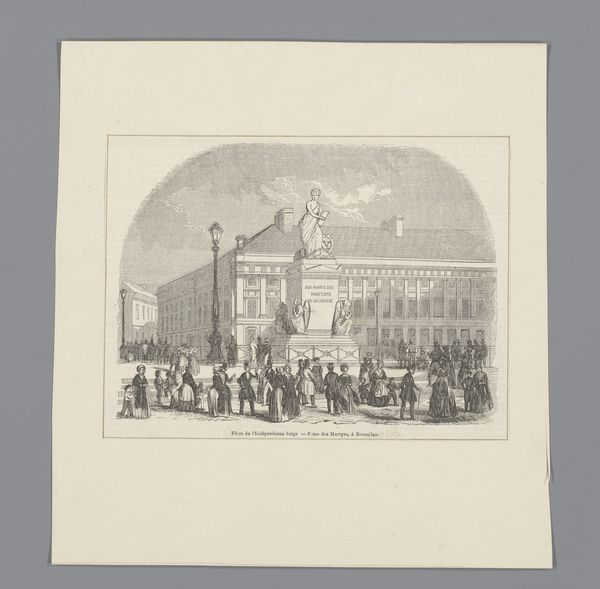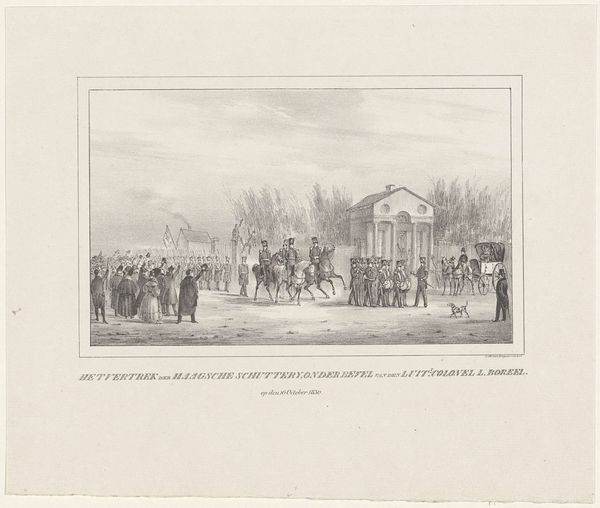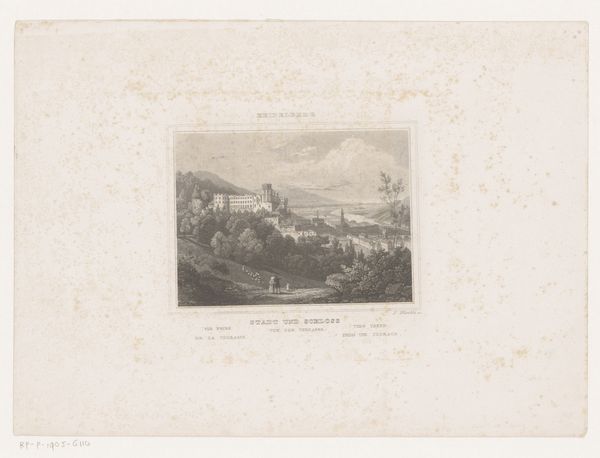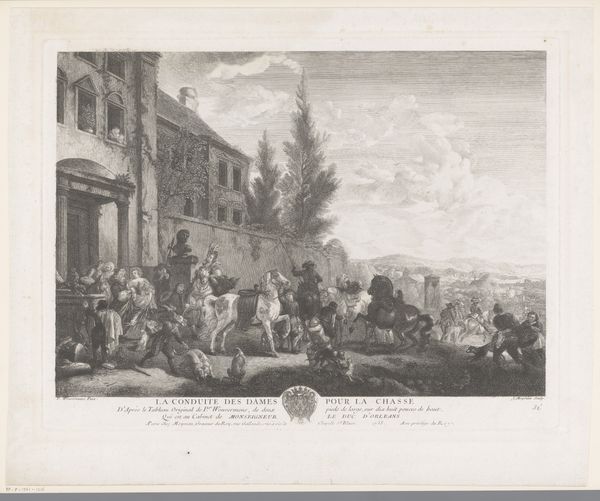
#
photo of handprinted image
#
aged paper
#
light pencil work
#
photo restoration
#
ink paper printed
#
parchment
#
light coloured
#
old engraving style
#
white palette
#
personal sketchbook
Dimensions: height 264 mm, width 331 mm
Copyright: Rijks Museum: Open Domain
Claude Niquet’s print shows us a crowd gathered on the Pont Neuf in Paris. It’s made using a technique called etching, a printmaking process with a long and fascinating history. Etching relies on the corrosive properties of acid, and begins with a metal plate covered in a waxy, protective layer. The artist then scratches an image into this coating, exposing the metal underneath. When the plate is submerged in acid, the exposed lines are eaten away, creating grooves. Ink is then applied to these grooves, and the plate is pressed onto paper, transferring the image. Look closely, and you can see how the etched lines give the image its characteristic look. The process allows for fine detail, perfect for capturing the hustle and bustle of Parisian street life. But consider, too, the labor involved: the careful preparation of the plate, the precise scratching of the image, and the skilled printing process. This wasn't just about aesthetics; it was a complex collaboration between artist, material, and workshop, bringing an image of Parisian life into being.
Comments
No comments
Be the first to comment and join the conversation on the ultimate creative platform.

